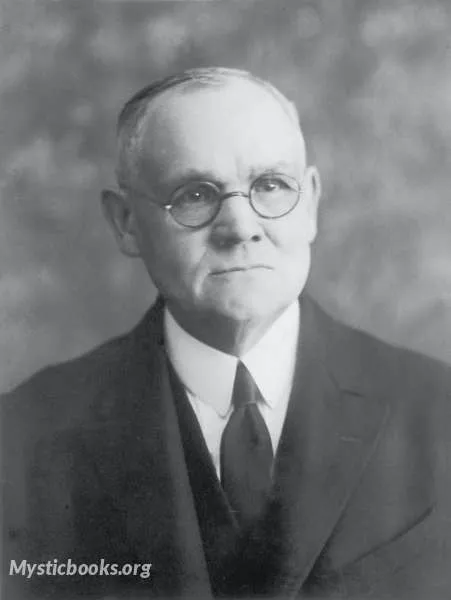
Timeline
Title
Country/Nationality
James E. Talmage
James Edward Talmage was an English chemist, geologist, and religious leader who served as a member of the Quorum of the Twelve Apostles of The Church of Jesus Christ of Latter-day Saints (LDS Church) from 1911 until his death.
A professor at Brigham Young Academy (BYA) and University of Utah (U of U), Talmage also served as president of the U of U and Latter-day Saints' University. In addition to his academic career, Talmage authored several books on religion, the most prominent of which are Jesus the Christ and Articles of Faith. Despite first being published in 1915 and 1899, the books remain classics in Mormon literature. An academic and religious scholar, Talmage did not believe that science conflicted with his religious views. Regarding the conflicting Mormon views on evolution, Talmage attempted to mediate between church leaders B.H. Roberts and Joseph Fielding Smith who disagreed about evolution and the origin of man. In addition to his academic and religious involvement, Talmage was involved in local political leadership in Provo as a city council member, alderman, and justice of the peace.
James E. Talmage, the first son of Susannah Preater and James Joyce Talmage, was born on 21 September 1862 and raised in Hungerford, Berkshire, England. He was born in the Bell Inn, a hotel in Hungerford, where his father was the manager.
At the age of twelve, he graduated from elementary school, passing the Oxford Diocesan Association exam for a second-class certificate. Talmage received a distinguished primary education and was named an Oxford Diocesan Prize Scholar after six years of schooling.
Talmage's early predilection was for the sciences, and in 1882 and 1883 he took selected courses in chemistry and geology at Lehigh University in Bethlehem, Pennsylvania. After graduating, he started advanced work at Johns Hopkins University in Baltimore, Maryland in 1883.[7] In the spring of 1884, while at Johns Hopkins, Talmage journaled about many laboratory experiments, including one on the ingestion of hashish.[8] After researching at Johns Hopkins, he returned to BYA and became a professor of geology and chemistry. Shortly after returning to BYA, Talmage became the counselor (chief assistant) to its principal, Maeser, and worked as acting principal during Maeser's absence. He also became a member of BYA's board of trustees, an alternate member of the Utah Stake high council and was a common speaker at youth meetings across Utah county.
In 1888, Talmage married Merry May Booth (1868–1944), on 14 June 1888. Booth was a native of Alpine, Utah, and the daughter of immigrants from Lancashire. She started studies at the normal school connected with BYA in 1885, when she was 16. It was there she met Talmage, who was one of her instructors. While at BYA, Booth was secretary of the Polysophical Society. After completing her course of normal study, May took a job as a teacher in Kaysville, Utah. A few months later, Talmage undertook a project to study the waters of the Great Salt Lake; Talmage's main reason for this journey, though, was to pursue a relationship with Booth, and five months later they were married in Manti, Utah.
In 1891, Talmage published a work entitled Domestic Science at the urging of Wilford Woodruff and the other members of the First Presidency. This was a more general work on science aimed at an older audience. In April 1889, Talmage was appointed a member of the examining board for all schools of LDS Church, along with Maeser and Joseph M. Tanner. This board approved teachers to teach with any school run by the church.
In January 1891, Talmage was replaced at LDS College by his assistant, Willard Done. Talmage was appointed, along with Willard Young, to form a new university to be run by the LDS Church in Salt Lake City, called Young University. He continued lecturing on scientific subjects at LDS College through the end of that academic year.
From the late 1890s to 1911, Talmage worked as an independent mining consultant and served as a scientific consultant in legal disputes surrounding Utah's mining industry. Talmage was an expert in mining and applied chemistry and had cultivated a positive reputation in his various religious and civic leadership positions. Due to his financial success in consulting, he officially ended his academic career in 1907. The most controversial mine Talmage analyzed during his career was John A. Koyle's Relief Mine, the Dream Mine, in Spanish Fork, Utah. Koyle had allegedly prophesied that the mine would offer the LDS Church resources and lead many to invest in the mine, believing it contained valuable materials. Talmage assessed the mine and determined it was worthless.
Talmage died on 27 July 1933 in Salt Lake City at age 70. He was buried at Salt Lake City Cemetery. The vacancy in the Quorum of the Twelve created by his death was filled by Charles Albert Callis
Books by James E. Talmage
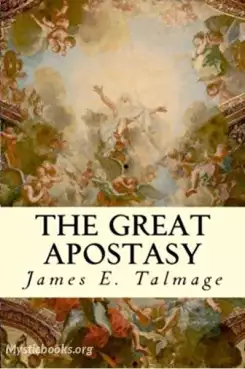
The Great Apostasy
The Great Apostasy Considered in the Light of Scriptural and Secular History is a 1909 book by James E. Talmage that summarizes the Great Apostasy from the viewpoint of The Church of Jesus Christ of Latter-day Saints.
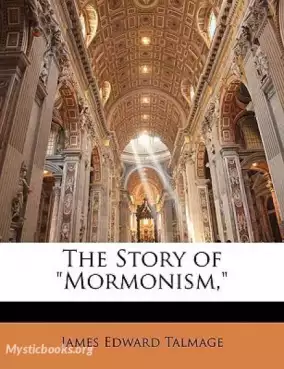
The Story of Mormonism
A few years before James E. Talmage was called to serve as an apostle for the Church of Jesus Christ of Latter-day Saints (also known as the "Mormon" church), he gave a series of lectures at universities such as the University of Michigan and Cornell...
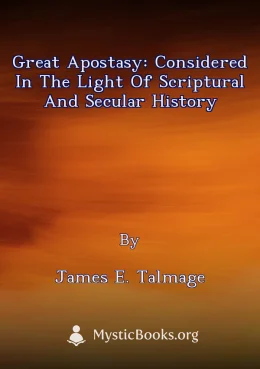
Great Apostasy: Considered in the Light of Scriptural and Secular History
Elder James E. Talmage, an apostle of The Church of Jesus Christ of Latter-day Saints, makes a survey of the Latter-day Saint view of the Great Apostasy. The book's subtitle states that it is a study "considered in the light of scriptural and secular...
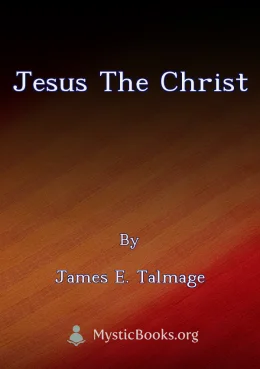
Jesus the Christ
This book presents a scriptural biography of Jesus Christ from the perspective of the Church of Jesus Christ of Latter-day Saints. It explores various aspects of Jesus' life, including his pre-mortal existence, his earthly ministry, and his post-resu...